Cast of Characters
This material is copyright Shareen Blair Brysac, 2000 |
Mildred Harnack-Fish
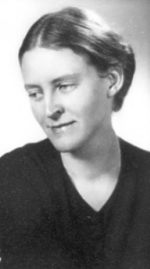
|
Wisconsin
born and bred, Mildred followed her husband to Germany in 1929. Active
as an instructor in American literature at both the university and gymnasium
level, she wrote newspaper articles, translated German and American literature.
In 1941, she received a Ph.D. in American literature at Giessen University.
In 1933 along with Martha Dodd she assembled a literary salon. Together
with her husband she formed a resistance group, mostly from her former
students, to oppose Hitler, which later was dubbed the "Red Orchestra"
by the Nazis. The group passed on intelligence to the Americans (1938-41)
and the Soviets (1935, 1940-42). On Hitler's orders, Mildred Harnack was
executed at Plötzensee on February 16, 1943. September 16, her birthday
is a day of remembrance in Wisconsin.
Mildred Harnack School
Clara Leiser's Poem to Mildred
After Her Execution |
Arvid Harnack
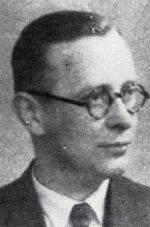 |
Born
to a scholarly family in Darmstadt-he was the nephew of Adolf von Harnack,
the German theologian--Arvid was raised in Stuttgart and Jena. Too young
to fight in World War I, he fought with the Freikorps, a right-wing paramilitary
group in Silesia, Kiel and Berlin. He was awarded two doctorates both
with the unusual distinction, summa cum laude. Awarded a Rockefeller scholarship,
he met and married Mildred Fish in 1926 in Wisconsin. Radicalized by his
study of labor history with Professor John R. Commons and his participation
in the Sacco-Vanzetti protests, Harnack returned to Germany and began
a career as a civil servant. In 1932 he became secretary of Arplan, a
group dedicated to studying the planned economy. He accompanied this group
on a study trip to the Soviet Union in 1932. In 1935 he joined the Economics
Ministry and was promoted, in 1942, to Oberregierungsrat. In 1938, he
began meeting with Donald Heath, First Secretary of the American Embassy
in Berlin and during long walks provided Heath with information regarding
Germany's preparations for war and the Reich's economy. In 1940, he met
and joined forces with Harro Schulze-Boysen and his wife, Libertas. In
September, 1940 Arvid agreed to help the Soviets as well as the Americans.
Before the German invasion of the Soviet Union, Harnack and Schulze-Boysen
provided key intelligence to the NKVD's Berlin representative, Alexander
Korotkov. The Harnacks were arrested on September 7 in Preil, a fishing
town on the Baltic. He was tried by the Reich's Court Martial Court and
executed for treason on December 22, 1942.
(Read Arvid Harnack's last letter) |
Martha Dodd
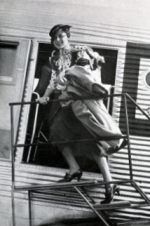 |
Born
1908 in Ashland, Virginia. After graduating from the University of Chicago,
she became assistant literary editor of the Chicago Tribune. Martha was
briefly married to a banker, George Roberts, before moving to Berlin where
her father became FDR's ambassador in 1933. Along with Mildred, she wrote
a book column for Berlin Topics, a newspaper for English-speaking expatriates.
After several affairs with diplomats, newspapermen and Nazi officials,
she fell in love with a Soviet diplomat, Boris Vinogradov.She was persuaded
by another Russian to help the Soviets mainly by passing on information
obtained from opening her father's mail and gossip obtained at diplomatic
parties. Her father was recalled in 1937 and Martha returned home although
not before trying to persuade Stalin on a trip to Moscow to let her marry
Boris. (Boris was executed for his efforts in 1938.) Martha married Alfred
Stern in 1938 and published several books, the most successful being Through
Embassy Eyes, an account of her adventures in Berlin. In 1953, tipped
off that they were about to be indicted as Soviet spies the Sterns fled
to Mexico City with their son. In 1957, they were indicted on six counts,
one--conspiring to transmit US defense information to the USSR-carried
the death penalty. Fearing that they were about to be extradited, they
emigrated to Prague where Martha died in 1990. |
Harro Schulze-Boysen
 |
A
first lieutenant in the Reich's Luftwaffe Ministry when the Harnack's
met him, he was 33 years old when he was tried and sentenced to death
for "the preparation of high treason, demoralization of the armed forces
and giving aid and comfort to the enemy." Schulze-Boysen's family was
firmly grounded in naval tradition-a great uncle was Admiral von Tirpitz-and
he was born at Kiel, Germany's great naval base. Although he began legal
studies, in 1932, he became editor of the magazine, Gegner. In 1933,
he was nearly beaten to death by the SA but he emerged more determined
then ever to fight the Nazis. As he told a friend, "I have put my revenge
on ice." After his marriage to Libertas Haas-Heye, he continued gathering
a circle of resisters. In 1940, Schulze-Boysen and Harnack's lives became
intertwined with a young Soviet agent, Alexander Korotkov. Schulze-Boysen
was arrested at his office in August, 1942.
|
John R. Commons
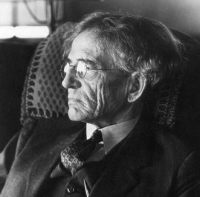 |
Arvid Harnack came to the United States in 1926 to study with the renowned
labor historian John R. Commons. A Labor Hall-of-Famer, Commons (1862-1945)
was the first great economist to put his knowledge to work improving
the conditions of the laborer. As one of the fathers of "the Wisconsin
Idea," where the State and the University collaborated on drafting legislation,
Commons (or his students the so-called Friday Niters) contributed to
practically every piece of progressive social and labor legislation
in the first half of the 20th century: vocational education, workers'
compensation, job safety, factory inspection, social security, unemployment
compensation, unionism, collective bargaining, civil service, and-not
least-the administration of labor law. In 1934, he wrote an authobiography
entitled simply Myself.
|
Ernie Meyer
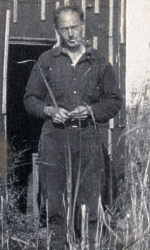 |
Born in Denver, Colo., in 1892, Ernest L. Meyer grew up in Milwaukee,
where his father Georg was editor of the Germania, the largest of the
city's German-language papers. Meyer entered the University of Wisconsin
in 1914, edited the Wisconsin Literary Magazine, and in his senior year
was expelled for refusing military service as a conscientious objector;
he was jailed in Fort Leavenworth, and a decade later reinstated by the
UW Regents (an experience he recalled in Hey, Yellowbacks!). In 1922,
he joined the pro-LaFollette Capital Times as managing editor, then as
columnist from 1927-35, when he left Madison for New York to write "As
the Crow Flies" for The New York Post from 1935-41. He continued as a
weekly columnist for The Progressive, and as telegraph editor of The New
York Daily News. His memoir, Bucket Boy: A Milwaukee Legend (1947), is
a unique record of the pre-World War I city. Meyer died in New York in
1952. |
Dorothy Meyer
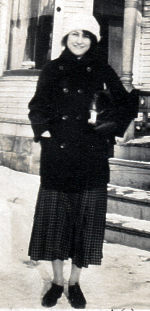 |
Dorothy Narefsky was seven on arriving at Ellis Island with her mother
and younger brother from Bialystok, Russia. Having attended night school
while working in needle trades, she entered Cornell University in 1920.
She continued as a graduate student at the University of Wisconsin in
Madison, where she met her future husband, the journalist Ernest L. Meyer,
and Mildred and Arvid Harnack. Along with her husband, she visited in
the Harnacks in Berlin in 1932, and saw Mildred during her final American
visit. When Ernie moved east to write a column for The New York Post,
Dorothy became a teacher in the city's public schools. She died in New
York in 1992. |
Clara Leiser
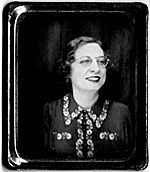 |
Like Mildred Harnack, Clara Leiser was born in Milwaukee and attended
the University of Wisconsin at Madison. She was a favorite student of
William Ellery Leonard and eventually became his literary executor. Leiser
was the author of 5 books, among them a biography of the opera star Jean
De Reszke and Lunacy Becomes Us, a collection of Third Reich quotes. She
visited Germany several times during the 1930s and had the distinction
of having her books banned by the Nazis. After hearing about Mildred's
death, she wrote a muilti-stanzed sonnet sequence in tribute to her friend.
In later years, she lived in New York City where she devoted her life
to a penpal organisation, Youth of All Nations. |
Jane Donner Sweeney
 |
Jane
Esch, the niece of Mildred Harnack, was born in Chevy Chase, Md. in 1916.
After graduating from college, she sailed to Germany for a visit with
Arvid and Mildred. There she met and married an economist, Otto Donner.
She obtained a Ph.D. in American Literature from Berlin's Kaiser Wilhelm
University in 1940. The Donners first son Andreas was born in October
1940. Two more sons were born during the war before Jane and her sons
were evacuated from Berlin due to Allied bombing. They lived for a time
in Varchentin, Mecklenburg, later joining a column of German refugees
fleeing advancing Russian troops. Andreas was diagnosed with tubercular
meningitis and died shortly after the war ended. Returning to the United
States Jane became a psychotherapist. After she divorced Otto Donner in
1965, she remarried Vincent Sweeney and together they founded the Center
for Study of Human Systems. Jane and her younger son died in a boating
accident in Chesapeake Bay in 1994. |
William Ellery Leonard
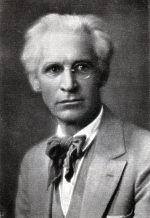 |
William Ellery Leonard (1876-1944) was an English professor for many years
at the University of Wisconsin. He was also areknowned poet and translator
of Beowulf and Lucretius. His sonnet sequence "Two Lives" was a local
bestseller. After obtaininghis M.A. from Harvard, Leonard studied at Göttingen
and later Bonn, where he developed an abiding love for German culture.
Leonard was married 4 times to 3 wives, all of them red-headed.
Read a Sonnet by William Ellery
Leonard |
Greta Kuckhoff
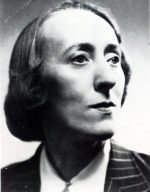 |
Greta
Lorke met the Harnacks when they were all at the University of Wisconsin
in 1927 and members of Commons' group the Friday-Niters. Greta, who
had studied with Werner Sombart and Max Weber, was a graduate student
and later assistant of the sociologist, Edward Ross. After her return
to Germany she was a free-lance English teacher and translator. She
met Adam Kuckhoff in 1930 and married him in 1937. Her son Ule was born
in 1938. It was Kuckhoff who introduced the Harnacks to the Schulze-Boysens
in 1940. Grete was arrested by the Gestapo on September 9, 1942. She
was tried in 1943 and given a death sentence but it was changed through
the intervention of the president of the Court Martial Court. After
another trial, she wasm sentenced to ten years in prison. She was freed
by the Red Army in May, 1945. She returned to East Berlin and became
president of the Notenbank. In 1972, with some difficulty, she published
her memoir Vom Rosenkranz zur Roten Kapelle (From Rosary to Red
Orchestra). She died in 1981 in Berlin.
|
Libertas Schulze-Boysen
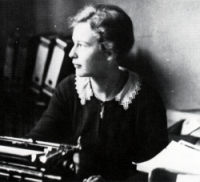 |
Libertas
Schulze-Boysen was born in Paris in 1913, the youngest of three children
of Professor Haas-Heye and Countess Victoria zu Eulenburg and Hertefeld.
She spent her childhood at Liebenberg, the family estate of her mother,
the daughter of Prince Eulenburg, the close friend of Kaiser Wilhelm II.
She grew up at Liebenberg, fifty miles north of Berlin. In 1932, after
finishing her education in Switzerland, Libertas returned to Germany and
obtained a position in the press office of MGM. In 1936, she married Harro
Schulze-Boysen. Around 1940, Greta Kuckhoff introduced Libertas to Mildred
Harnack and the two couples joined forces against the Nazis. She wrote
film criticism for the Essen newspaper and using the cover of her work
for the German cultural film center, she collected evidence on Nazi war
crimes which were being perpetrated on the eastern front. Once Harro was
arrested, she warned their friends but was arrested herself as she was
attempting to leave Berlin by train on September 8, 1942. She was tried
with the main defendants, and executed by guillotine on December 22, 1942.
|
Thomas Wolfe

in Berlin |
Thomas Wolfe was thirty-four and the successful author of Look Homeward,
Angel and Of Time and the River when he came to Berlin for the first
time. He met Mildred Harnack at a party given by Martha Dodd at the
American Ambassador's residence. Squired around Berlin by Mildred, Martha,
H-M Ledig-Rowohlt and Martha's brother Bill, he thoroughly enjoyed himself.
Mildred interviewed him for the Continental Post achieving something
of a literary scoop. Lionized by what was left of Berlin's literary
society, Wolfe returned the next year (1936) for the Olympics. But,
influenced in part by Mildred, when he returned to New York, he wrote
an article severely critical of the Germans which appeared in the New
Republic entitled "I Have a Thing to Tell You." Wolfe died in 1938 and
his last works The Web and the Rock and You Can't Go Home Again were
published posthumously.
|
Dietrich Bonhoeffer
 |
Dietrich
Bonhoeffer (b. 1906) was the son of one of Berlin's leading psychiatrists
and neurologists, Karl Bonhoeffer. From childhood, the Bonhoeffer, Delbrück
and Harnack families were friends, neighbors and several of the children
inter-married. (It should also be noted that Amalie von Harnack and
Lina Delbrück were sisters; Clara Harnack was their cousin.) Dietrich
was a theology student of Adolf von Harnack's in Berlin and gave the
eulogy at the Harnack's funeral. After completing his doctorate in 1930,
Bonhoeffer arrived at the Union Theological Seminary in New York on
a fellowship. He became an outspoken opponent of the Nazis and one of
the leaders of the Confessing Church after 1933. In 1938 he was drawn
into the group of his brother-in-law Hans von Dohnanyi which was planning
a coup d'etat. In 1940, he began to work closely with the group of Abwehr
resisters. On their behalf, he made several trips abroad to establish
contacts with the allies. He became engaged to Maria von Wedemeyer in
1943 shortly before he was arrested. Bonhoeffer spent two years in Tegel
prison. After a summary court martial, he was executed on April 9, 1945.
|
Herbert Gollnow
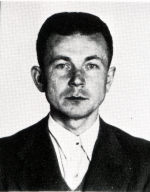 |
Born in Berlin in 1911, he worked for the German railroads as an inspector.
He joined the Nazi party in 1936 and as part of his preparation for
a higher position, he studied English with Mildred Harnack. In 1939
he became a lieutenant in the Luftwaffe. He pursued further studies
at the Foreign Policy Faculty and through the intervention of Schulze-Boysen
switched from the Luftwaffe to the Abwehr where he was involved with
the execution of sabotage operations on the southern section of the
Eastern Front. Gollnow passed on information about these operations
to the Harnacks who in turn passed it on to "Kent" when he came to Berlin
in October, 1941. He was arrested in October 1942 and tried in December,
1942, receiving the death sentence. He was executed on February 12,
1943.
|
Falk Harnack
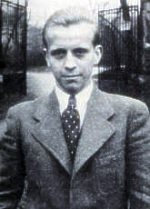 |
Arvid's
younger brother Falk was born in 1913 shortly before the death of his
father. Between 1933 and 1937 he studied at Berlin and Munich universities.
After his graduation, he worked at the German National Theater in Weimar
and the Landestheater in Altenburg until he was drafted into the Wehrmacht
in 1941. He often met opponents of the regime in the Harnack's Berlin
apartment and during the winter of 1942-43 he was introduced by his
fiancée, Lilo Ramdohr, to the circle of the White Rose in Munich. When
the group was discovered, Harnack was arrested in March 1943 and stood
trial along with Willi Graf, Professor Kurt Huber and Alexander Schmorell
before the People's Court in Munich. He was acquitted and released in
the hopes that he would lead the Gestapo to other members of the resistance.
In 1943, he deserted in Greece after an order for his arrest came from
Himmler. He fought with the Greek partisans until the end of the war
when he returned to Germany. He became a director and dramaturge in
Bavaria and then from 1949-51 he was the artistic head of DEFA, the
East German film production company. After a dispute with the East German
Communist Party (SED) over his film adapted from the novel of Arnold
Zweig - The Ax of Wandsbek--he moved to West Berlin where he made a
number of television and feature films including one on the July 20th
bomb plot. He was married to the actress Käthe Braun. After a long illness
he died in Berlin in 1991.
|
Adolf Von Harnack
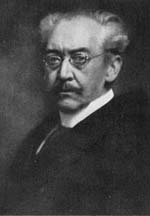 |
Arvid's uncle, Adolf von Harnack, one of Wilhelmine Germany's most proment
scholars, was born in Dorpat, now Tartu, in Estonia in 1851. After theological
studies at the University of Dorpat where his father was rector, and
after further studies at Leipzig, he became a professor at Leipzig.
In 1979 he married Amalie Thiersch with whom he had seven children.
In 1888, with the support of Bismarck but over the strong objections
of the Lutheran Church fathers and other conservatives he was appointed
to the theological faculty of Kaiser Wilhelm University in Berlin. Named
to the Prussian Academy in 1890, around this time he became the adviser
to Kaiser Wilhelm on the question of the Baltic Germans. In 1900, his
most well-known work, What is Christianity? appeared. In 1914, he was
raised by the Kaiser to the nobility. In 1905 he became the director
of the Kaiser new library, now Berlin's State Library; in 1911 he helped
found the Kaiser Wilhelm Society now the Max Planck Institute and served
as its president until his death in 1930.
|
Adolf Henning Frucht
as young scientist
 |
The
grandson of Adolf von Harnack, Frucht was born in Torgau in 1913. He
studied medicine and through the contacts of his grandmother, Amalie
Harnack, he received a fellowship in 1938 to study in the United States.
Instead of remaining in the U.S., however, he returned to Germany on
the last boat because he said, "I must go where I can be of use." Frucht
was a military doctor during World War II and had some contacts with
the resistance groups around his uncle Ernst von Harnack and with the
Harnack/Schulze-Boysen group. During the Russian campaign he was a tank
commander but because of jaundice, he was evacuated to a military hospital
in Metz. After the disaster at Stalingrad when the medical system broke
down her volunteered to return to the medical service because he wanted
to save the lives of the soldiers. After the war, he remained in East
Germany because, as he said, the need for doctors was greater. He became
a professor of physiology at Humboldt University and the head of the
Institute for Work Physiology. But during the height of the Cold War
he betrayed to the CIA the Warsaw Pact's Alaska Plan which was designed
to take out the U.S. personnel manning the early warning radar in the
Aleutian Islands with a special poison gas effective below freezing
temperatures. He was arrested in 1967 and served ten years of a life
sentence in East Germany's most notorious prison Bautzen until he was
exchanged for a Chilean communist. He died in 1993 in Berlin.
|
Donald Heath
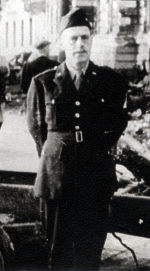 |
Donald
Heath, Arvid Harnack's contact in the American Embassy from 1938-1941,
was born in Topeka Kansas in 1894. During WWI he served as an infantry
officer in France. Before joining the U.S. Consular service in 1921,
Heath also served as the White House correspondent for the United Press.
In 1938, he was sent to Berlin as the First Secretary of the Embassy
but perhaps even more important was his additional position as Monetary
Attaché answerable to Treasury Secretary Henry Morgenthau. In this capacity
he served as a clandestine link to Harnack and to Hjalmar Schacht, the
former German Minister of Economics. Heath left Germany in the summer
of 1941 on assignment to Santiago, Chile. In 1944, he joined Eisenhower's
staff as Political and Technical Adviser of the U.S. Military Government
in conquered Germany. After the war, he was helpful to both the Harnacks
and Donners--assisting Jane and her husband in their return to the U.S.
IN 1947, Heath served as U.S. Minister to Bulgaria until he was expelled
in 1950 (the Bulgarians claimed he was trying to overthrow the government)
a measure which resulted in the rupture of relations with the U.S. From
1950 to 1953 he served in Indochina first as Minister to Vietnam, Cambodia
and Laos and finally Ambassador. While in Vietnam he survived three
assassination attempts. His final posting was as Ambassador to Saudi
Arabia. He died in 1981.
|
The Red Orchestra
Photo taken at the Weisenborns' wedding |
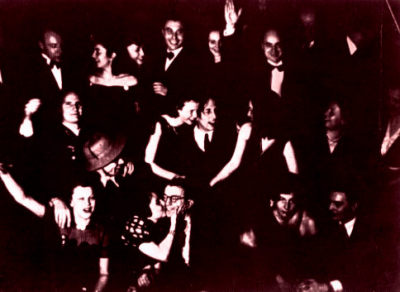 |
















